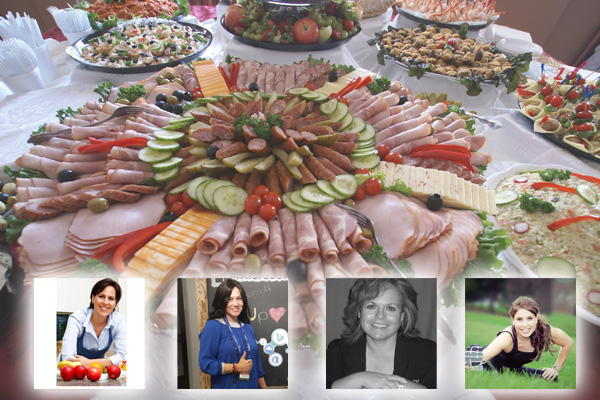Navigating the Holidays
 For people with diabetes, navigating the holidays can be tricky. That’s why in November, 2014, CDiabetes.com hosted a twitter chat full of helpful information and advice on how to be festive and minimize holiday stress.
For people with diabetes, navigating the holidays can be tricky. That’s why in November, 2014, CDiabetes.com hosted a twitter chat full of helpful information and advice on how to be festive and minimize holiday stress.
Holidays are not the time for drastic changes in your eating plan. Focus on maintaining, not losing weight. Don’t feel deprived – moderation is the key to navigating the holiday feasts ahead. Small portions are essential. Don’t be embarrassed to say no or leave food on your plate – you don’t have to finish everything. And one more vital smidgen of advice: don’t arrive at holiday meals starving.
November is Diabetes Awareness Month
29.1 million Americas have diabetes. Another 86 million have prediabetes. Why the continued increase? Sedentary lifestyles, higher body weights and BMIs, and poor quality foods and eating habits.
9 out of 10 people with prediabetes don’t even know they have it. Prediabetes increases the risk of heart disease and stroke. People with prediabetes may not have any symptoms. Prediabetes, left untreated, will most likely develop into diabetes and related complications. A simple blood test can let you know if you have prediabetes or diabetes. Get checked and know your numbers!
What are some ways to avoid food challenges over the holidays?
- Try to stay on your usual eating schedule as much as possible – that way there’s less room for temptation! And don’t forget to stay hydrated.
- There’s more alcohol around the holidays – try a spritzer instead of a full glass of wine.
- Eat or cook with whole-food ingredients, which are high in protein and low in sugar. Substitute healthy foods for the usual, unhealthy ingredients. For example, when making mashed potatoes, replace half of the potatoes with cauliflower. Steam vegetables instead of sautéing, and choose fat-free alternatives to full fat foods.
- Use the MyPlate method: fill half of your plate with veggies, a quarter with some carbohydrate and a quarter with protein. Limit second helpings to vegetables and salads.
- If you’re traveling, pack your own food for the flight, train or car. You control the calories and carbs!
- If you’re invited to a holiday meal, bring a yummy, healthy salad. The other guests – and the hostess – will love it.
- Walking for 10 minutes after each meal helps lower your blood glucose, which “rests” your pancreas. Try to move more on days when you are attending a party or holiday gathering. This will burn sugar and utilize insulin.
- If your workplace is filled with holiday treats, bring your own fruit, yogurt, nuts or popcorn to snack on.
- And remember, a good night’s sleep can do wonders for helping normalize blood glucose values.
What’s the relationship between body weight and heart health?
Excess body weight affects all areas of life. If you have excess body weight you’ll have reduced energy capacity, be less active, and burn fewer calories. Excess weight can affect stress levels and sleep patterns, and also causes inflammatory changes, putting you at greater risk for heart problems, diabetes and stroke.
But don’t go on some fad diet! Slow, intentional weight loss is the safest and best.
What should I serve for a healthy holiday meal?
Many Americans will eat around 2,500 calories on Thanksgiving Day. Some stats show that the average American will consume about 4,500 calories. Ouch!
For a healthy holiday meal, focus on the turkey and lots of vegetables, with small amounts of stuffing, potato or sweet potato. Make your holiday plate “colorful” including lots of veggies, salads, other high fiber foods. Roasted vegetables are delicious, boost nutrition and help you to feel full without increasing blood sugars. Be aware of portion sizes, use smaller plates, drink more water, and preplan desserts.
Watch your intake of condiments since ketchup, BBQ and other sauces can add up to significant sources of carbohydrates.
Limit alcohol intake – alcohol causes dehydration, affects blood sugar, and can impede good food choices.
Most importantly, remember, holidays are about family, and memories; holiday dinner is ONE meal, not a weeklong event
How do I fit in exercise over the holidays?
- Break up your exercise into shorter segments, like walking for 10 minutes, 3 times a day, or climbing stairs several times a day.
- If you’re flying, use layovers and plane delays as time to walk in airports. You’ll burn calories, improve circulation and “keep calm.”

